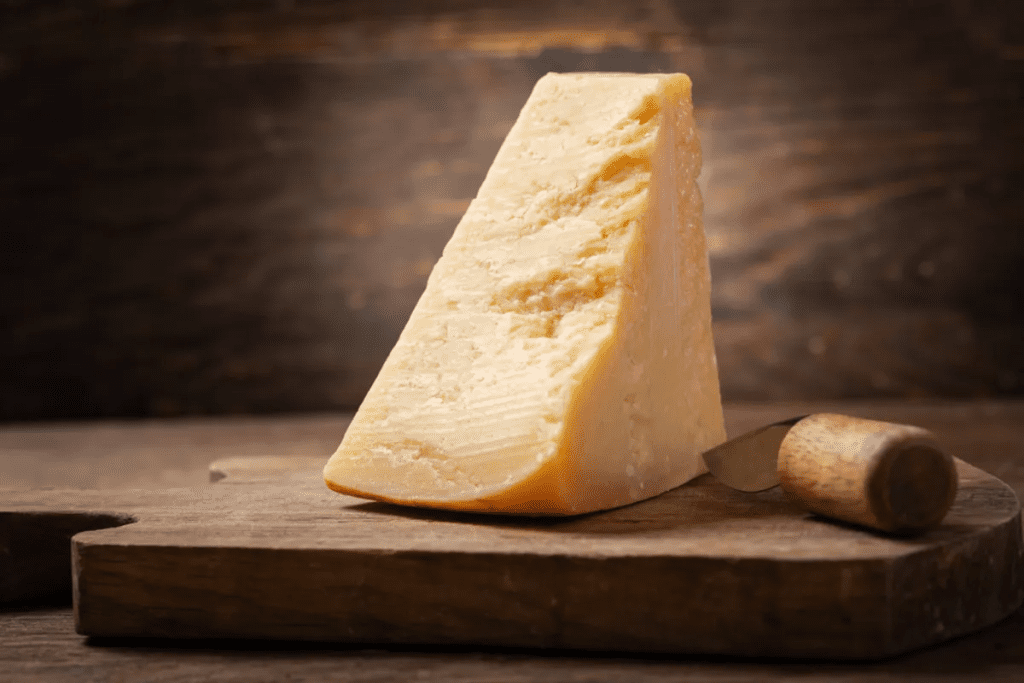In the vast culinary world, every ingredient has a story, and recently, the spotlight has turned to an old culinary friend—Parmesan cheese. This beloved cheese, known for its hard texture and sharp, nutty flavor, is steeped in tradition and intricate crafting techniques that might surprise even the most seasoned foodies.
The Basics of Parmesan Cheese

Parmesan cheese, or Parmigiano-Reggiano as it’s officially known in Italy, starts its journey as a simple product made from cow’s milk. However, the process it undergoes transforms it into a culinary staple prized around the world. Traditionally, Parmesan is made using copper vats where the milk is heated and combined with natural whey and rennet, a crucial ingredient that plays a pivotal role in the cheese’s development.
The Role of Rennet in Cheese Making
Rennet is an enzyme that many outside the cheesemaking community might not be familiar with, yet it’s essential in the production of Parmesan. It is derived from the stomach lining of unweaned calves, which contains high levels of chymosin—an enzyme critical for coagulating milk. This natural coagulant helps separate milk solids from the liquid, forming the curds that eventually become cheese.
Why Rennet Can Be Controversial
The use of animal rennet in cheesemaking has become a point of contention, particularly among vegans, vegetarians, and those who prefer to avoid animal-derived food products. The idea of consuming an enzyme from the stomach of a calf can be unsettling, prompting many to look for alternatives. The traditional method of extracting rennet involves animals that are very young and have consumed only milk, thus ensuring the enzyme’s purity and effectiveness.
Alternatives to Animal Rennet
Recognizing the need for more ethically aligned alternatives in cheesemaking, some modern producers have started using vegetable rennet. This plant-based option provides a similar coagulating effect without the use of animal stomachs. The adoption of vegetable rennet is growing, yet many traditionalists and purists still prefer animal rennet for its impact on the final flavor profile and texture of the cheese.
The Aging Process of Parmesan
One of the defining characteristics of Parmesan cheese is its aging process. Parmesan must be aged for at least 12 months, although many connoisseurs and producers prefer longer aging periods to enhance its flavor and texture. During this time, the cheese develops its unique salty bite and granular texture, becoming an irreplaceable addition to many dishes.
Parmesan in Culinary Use
Parmesan is not just a topping; it’s an ingredient that can elevate simple dishes to gourmet status. Whether it’s shaved over pasta, incorporated into a risotto, or simply enjoyed on its own, Parmesan has a versatility that is celebrated in kitchens worldwide. However, for vegetarians or those avoiding animal-derived ingredients, it’s important to verify the type of rennet used in their Parmesan to ensure it aligns with their dietary preferences.

Conclusion: A Deeper Appreciation for Parmesan
The recent curiosity around how Parmesan is made reflects a broader trend of consumers wanting to understand more about where their food comes from and how it is made. Learning about the traditional methods involved in the production of Parmesan cheese not only enriches our appreciation of this staple ingredient but also highlights the importance of informed food choices in our diets. Whether you opt for a wedge of Parmesan made with traditional animal rennet or a version crafted with vegetable alternatives, understanding its origins enhances every bite. So, next time you sprinkle Parmesan over your dish, remember the ancient artistry and modern considerations that make each flake possible.


